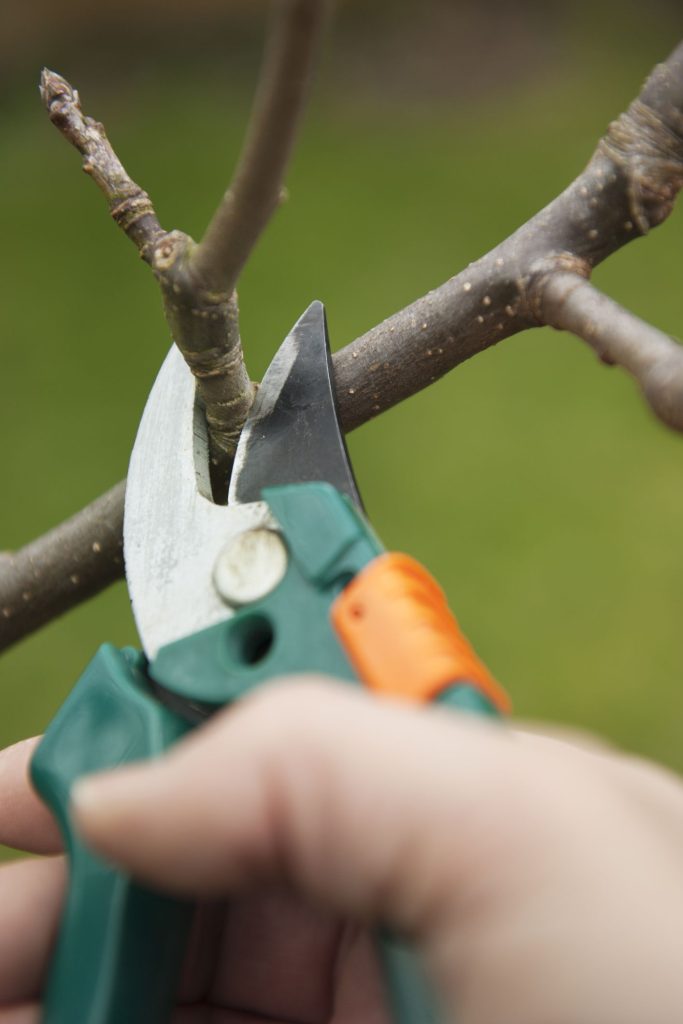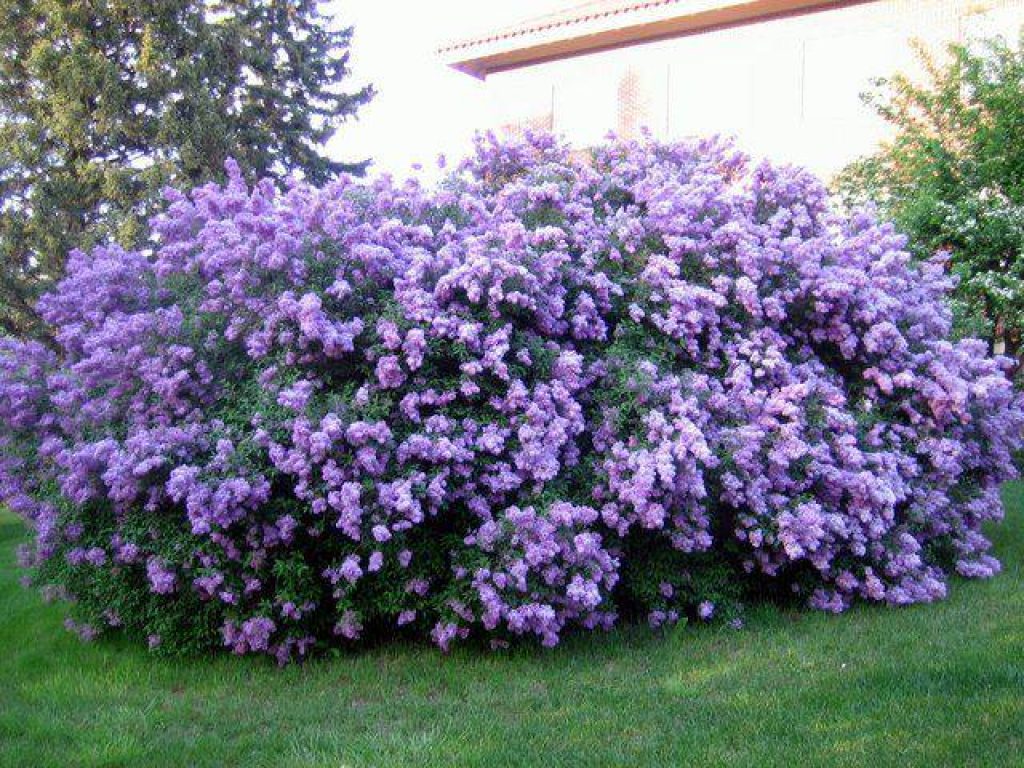

Many trees and especially shrubs require regular pruning of overly dense or old branches. Depending on the season and the plant, a number of things need to be taken into account. We explain the different types of pruning and which garden tools are recommended for pruning.
Divide plants into pruning groups

In order to simplify the subject of plant pruning, it helps to divide the woody plants into individual pruning groups. Accordingly, the most common types of pruning are planting pruning for new plantings, maintenance pruning and regeneration pruning. However, there are also trees and shrubs that do not require any pruning at all.
Pruning group 1: Planting pruning
Already at the time of new planting, plants should be pruned appropriately. This helps them to grow and to form good branches. Basically, planting pruning removes diseased and weak shoots as well as damaged roots. These prunings are also called nursery and development prunings.
- For young trees, you should shorten the branches a little and thin out narrow branches. This encourages growth and gives new shoots plenty of room.
- You only cut back new shrubs if the growth has too few branches. By doing so, you give it the opportunity to form new and better branches.
Pruning group 2: Maintenance pruning
In order for a plant to develop well and maintain a beautiful structure, it should receive regular maintenance pruning. Trees need it highest in the first years, until they have developed a beautiful growth. And many shrubs also need it later, mainly for small corrections and to remove old branches.
For flowering shrubs, regular thinning or pruning after flowering is recommended – depending on the woody plant, the implementation of this maintenance pruning varies.
Shrubs that form long shoots on which flowers do not appear until subsequent years should be pruned every two or three years. Remove the oldest branches generously, if necessary to the ground. This will allow the plant to form new shoots and, more importantly, flowers.
Shrubs that bear their flowers in the period from early summer to autumn at the ends of the long shoots, require radical pruning in the spring: here you can remove all the branches from the previous year.

Pruning group 3: Rejuvenation pruning
Rejuvenation pruning is primarily suitable for shrubs that have been growing poorly for a long time or have been cut back incorrectly. This involves radically shortening the plant’s branches to a height of 30 to 50 centimeters. Species such as lilac, jasmine or hazel bush thus get the opportunity of new shoots and begin to rebuild from the bottom.
However, not all shrubs tolerate this radical pruning. Many conifers, but also broom or laburnum, often do not tolerate rejuvenation pruning.
Pruning group 4: No pruning necessary
There are many woody plants that do not require pruning at all. These actually include all species that grow arboreally. You only need to worry about “educating” your plants through pruning, so to speak, during the first few years.
In this pruning group, you only need to reach for the loppers or pruning saw to thin out the trees and shrubs a bit or to remove old and damaged branches.
Common questions about pruning
If trees have developed appropriately well, they usually grow completely independently and no longer require pruning. Even shrubs that grow nicely and evenly do not necessarily need pruning.
For most shrubs, you can base pruning on their flowering behavior, as described in Pruning Group 2. Otherwise, examine your trees and shrubs annually for diseased and dead branches and remove them as needed.
If a plant is basically developing poorly, severe pruning can give it a new chance to form new shoots and branching.
Manufacturers’ plant labels also often include the specific pruning types.
The time depends on the respective plant species. As a general rule, pruning in the spring will result in stronger growth, while pruning in the summer will slow down regrowth or prevent it altogether in the same year.
Spring bloomers should be pruned about every two to three years after flowering. For summer bloomers, on the other hand, pruning is recommended as early as spring to give the shrubs enough time to regenerate.
To give fruit trees plenty of vigor to produce fruit, pruning should usually be done in February or March. Pruning too heavily will encourage wood growth, and pruning too lightly will encourage fruit set.
Just thin out the crown of the tree a bit and remove interior branches, as they bear little fruit.
If severe pruning is necessary, it should be done between October and February, provided there is no frost. Radical pruning is prohibited by law between March 1 and September 30 to protect breeding birds and their nests. Only maintenance cuts are permitted during this period.
In order to give your woody plants a suitable pruning, depending on the thickness of the branch or the size of the shrub, you will need various tools that will make your work much easier.
For smaller branches at body height, pruning shears are recommended. It is suitable for branches up to 25 millimeters in diameter. Thicker branches up to 50 millimeters are best separated with pruning shears. The longer handles also allow higher parts of the plant to be reached. There are also models with a telescopic handle, which increases the reach even further. For very strong trunks, you should use a branch saw or a chain saw.
For tree and shrub pruning at lofty heights, it is worthwhile to purchase a high pruner or telescopic hedge trimmer. The devices are available with battery, electric and gasoline drive. There are also multi-tool models where the cutting head can be exchanged so that they can be used as hedge trimmers and chainsaws, for example.
Basically, the choice of the right garden tool depends on the types of trees and shrubs and the number of plants on your property. For a few cuts a year, hand-operated tools are usually sufficient; for frequent pruning, power tools make more sense.
In addition to the proper shears and saw, you should also have a ladder to help you access the tree and shrub. The cut branches and twigs can then best be shredded with the help of a shredder and optimally used as mulch or reused on the compost.
Always place the loppers or pruning shears just above an eye. If there is already a bud there, the cutting edge should be at its height. In this way, you prevent the penetration of pathogens and at the same time protect the fresh shoot.
Also, be sure to cut only at a slight angle and avoid cutting too large a surface.
Pruning wounds heal best in the summer. Hardy plants can also be pruned in winter when temperatures are around freezing. However, frost is best avoided to allow for better wound healing.
For smaller branches, the wound often does not need extra care. For larger pruning wounds, there are special wound closure products that help with healing.








